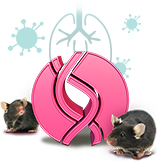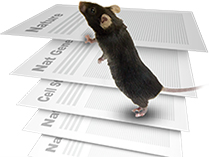● Promotion Period: April 23th - June 30th 2020
● Eligibility: End clients in Australia, New Zealand. Other Regions, please contact us.
●
For humanized models, knockout models, Rosa26 knockin mouse models of ACE2 and DPP4 on C57BL/6
mouse strains,
the exclusive sales prices are as below:
| ACE2 / DPP4 | Service Name | Deliverable | Promotion Price (USD/Strain) |
|---|---|---|---|
| Knockout Mice | ≧3 F1 Heterozygotes | 3,599 | |
| Humanized Mice | ≧3 F1 Heterozygotes | 8,400 | |
| Knockin Mice (Rosa26) | ≧3 F1 Heterozygotes | 9,600 |
● Note: Cyagen can also offer mouse models in BALB/c background, please contact us for further information.



 KO Mice
KO Mice
 KO Mice
KO Mice

 86 20-31601779
86 20-31601779





